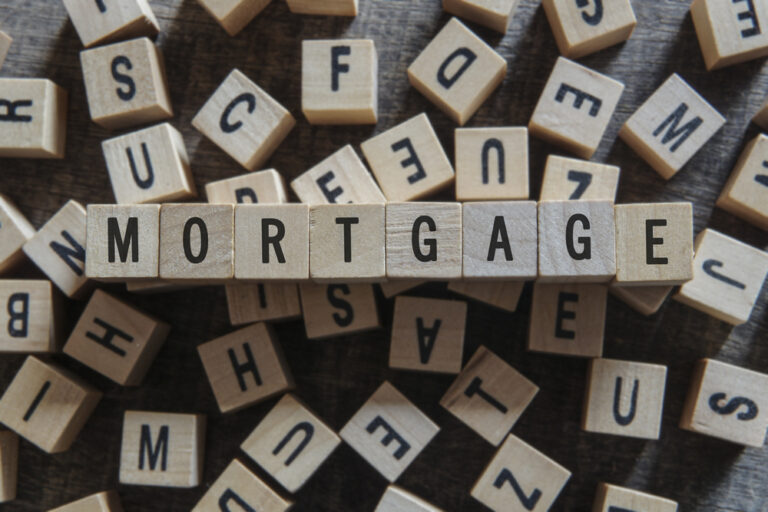So, your deposit is saved and you’re ready to purchase a home. The next step is to find out how much you can borrow.
That means approaching mortgage lenders, who will be able to tell you what you can borrow to buy your home.
But the process can be complicated and, at times, long-winded depending on your situation.
Follow Martin & Co’s guide to getting a mortgage, which outlines all the steps in the process.
How to get a mortgage
Before approaching mortgage lenders or a mortgage broker, it pays to have an idea both of what you need to borrow and what you actually can borrow.
Making sure you have set an achievable budget is key here and will help you keep what will almost certainly be your biggest ever purchase firmly on track.
The best place to start is with an online mortgage calculator, which will be able to tell you what your borrowing capability might be.
Once you’ve established your borrowing potential, it’s time to do an audit of your own financial situation.
Having debts or a poor credit history will affect your borrowing potential and may, in some cases, stop you getting a mortgage at all.
Making sure your finances are in order before making an application for a mortgage will help the process run a lot smoother.
Steps of a mortgage
Step 1: Speak to a lender / broker
Mortgage brokers are often a good starting point as they have access to a whole host of mortgages across the market.
Ask your local branch of Martin & Co if they can recommend a fee-free broker which could save you money.
Outline your circumstances and provide honest, up front information about your financial circumstances so the broker or lender can assess your borrowing capabilities.
Your lender or broker will work out the kind of mortgage you need and the term you’ll need it for. Generally, mortgages are offered over 25 years, but this does vary.
As well as gleaning general information about you and your finances to work out your borrowing potential, your broker or lender should also inform you of key information surrounding their mortgage deals and fees or charges associated with them.
Step 2: Agreement in principle
An agreement in principle is when a lender agrees to a maximum mortgage loan ‘in principle’, based on information provided by the buyer.
That will include proof of income, outgoings and debt, but is not a mortgage offer or part of the application process.
Agreements in principle are great for buyers who have not yet found a property to buy and can be used as a guide for purchase potential and to show a vendor’s estate agent that you are ready to proceed.
However, agreements in principle are just that – in principle. If your circumstances change or you have provided incorrect information, your lender may offer you a smaller mortgage in the application process or not lend to you at all.
Step 3: The mortgage application process
In order to work out your capability to pay back your mortgage, your lender or broker will undertake a more detailed assessment of your income, monthly expenditure, debts and credit history.
They’ll also ask questions about your future plans and how they might affect your ability to repay your loan. This could include plans to start a family or have more children.
If you are employed, your lender or broker will require proof of your income through employee payslips and / or bank statements. For self-employed workers or business owners, a number of years’ accounts are generally required.
Finally, your broker or lender will ‘stress test’ your income against rising interest rates to ensure fully you are able to meet your repayments.
Here are the main documents your lender or broker will require in order to process your mortgage application:
* Proof of income (payslips or accounts)
* Household utility bills
* Employer P60 form
* Passport or driving licence
* Three-to-six months’ bank statements
Your lender will also undertake a valuation of the property you wish to buy, to ensure its value covers the full amount of the mortgage you are borrowing.
Step 4: Choosing a mortgage product
Martin & Co recommend using an independant mortgage broker who have access to the whole of the market and can compare thousands of mortgage deals that your usual lender may not have access to.
Most mortgages are capital repayment mortgages, meaning you repay the lender’s interest and part of the total loan amount every month.
Interest-only mortgages mean you pay off the interest each month but none of the capital, but these are becoming extremely rare due to lender concerns at buyers being left with a huge debt at the end of their mortgage term.
Once you have decided, along with your lender or broker, the best mortgage for you, you’ll need to decide on the type of mortgage product that best suits you.
The two main types of mortgage product are fixed rate mortgages and variable rate mortgages.
The benefit of a fixed rate mortgage is your interest rate will remain the same for a certain period of the mortgage term, meaning even if interest rates rise, you won’t be faced with increased monthly payments.
If interest rates fall, however, you could find yourself on a fixed rate that is higher than the UK interest rate.
Variable rate mortgages mean your interest rate moves up and down with the Bank of England base rate.
A lender’s standard variable rate (SVR) mortgage is what those who are no longer tied into a fixed rate fall into.
Borrowers on the SVR have the flexibility of leaving their lender or overpaying their mortgage at any point with no penalties.
Lenders may also offer discount mortgages, tracker mortgages, offset mortgages and capped rate mortgages, but the most popular mortgage product is the fixed rate.
Step 5: The mortgage offer
Once your lender is satisfied you meet their criteria and affordability tests, you’ll receive an official mortgage offer.
Your solicitor will now take charge of dealing with your lender at both the exchange of contracts and completion stage of your purchase.
How long does a mortgage application take?
Mortgage agreements in principle can actually be completed in just a few hours by some lenders, but, as we stated above, this is not a solid guarantee that they will give you a mortgage.
While there are no common rules regarding how long the mortgage application process takes, generally it takes around a month from application to offer.
Some applications will be quicker and some, often applications from self-employed buyers, can take longer. This is due to additional information and checks the lender needs to make.
Valuation surveys can sometimes also hold up the process. Surveyors are often working to extremely busy schedules and this means you may have to wait for the survey to be completed.
Once you have received your mortgage offer, it is usually valid for up to six months.
If you are looking for a mortgage and need some advice on how to find the best deal, you can contact us here.




